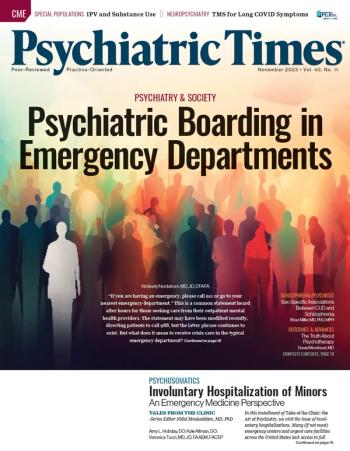
Digital Therapeutics Improves Paranoia
While this digital therapy failed to meet its primary endpoint in a recent clinical trial, results suggest it may improve paranoia in general.
A
SlowMo, a digitally supported reasoning intervention that consists of 8 face-to-face sessions lasting 60-90 minutes, takes an interventionist-causal approach to increasing cognitive behavioral therapy effectiveness by targeting casual reasoning processes in paranoia. The therapy was designed to build awareness of a tendency to jump to conclusions and develop increased belief flexibility.1
“SlowMo also uses digital technology and inclusive, human-centered design to improve the user experience with the aim of enhancing engagement and adherence for the widest possible range of people,” wrote Philippa Garety, PhD, et al. “SlowMo builds on the encouraging findings for stand-alone and blended mobile phone apps for psychosis and, to our knowledge, is the first blended digital psychological intervention for paranoia (using digitally supported face-to-face therapy and a mobile app).”1
A total of 361 participants with clinical paranoia from UK community health services were included in intention-to-treat analysis. Those with schizophrenia-spectrum psychosis and distressing paranoia lasting 3 months or longer were considered eligible. Of the 361, 332 participants provided primary outcome data, with 181 participants randomly assigned to the SlowMo group. Blind assessments were performed at clinics or in participant’s homes at 0 weeks for baseline, 12 weeks for postintervention, and 24 weeks for follow-up.
The primary outcome was paranoia, measured by the Green et al Paranoid Thoughts Scale (GPTS) total score at 24 weeks. While SlowMo therapy did not result in significant improvements in the primary outcome of total GPTS paranoia score at 24 weeks, secondary beneficial effects were found on this measure at 12 weeks.
“The results indicate that the treatment was effective, in part, through helping people to slow down their thinking and to worry less,” Garety et al concluded.1
The study’s authors noted further work to optimize SlowMo’s effects is needed.
Reference
1. Garety P, Ward T, Emsley R, et al. Effects of SlowMo, a blended digital therapy targeting reasoning, on paranoia among people with psychosis: A randomized clinical trial. JAMA Psychiatry. Published online April 07, 2021.
Newsletter
Receive trusted psychiatric news, expert analysis, and clinical insights — subscribe today to support your practice and your patients.














